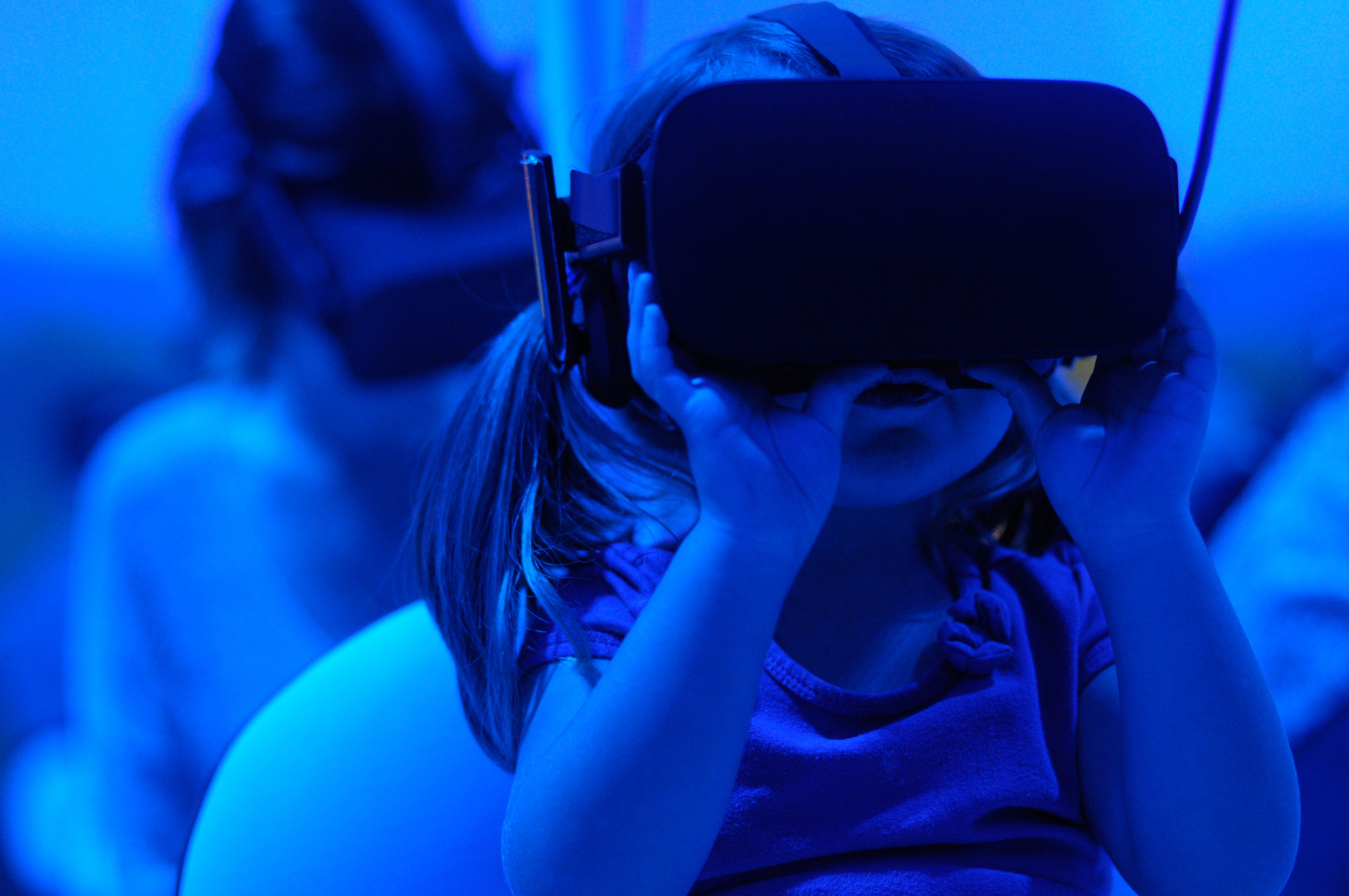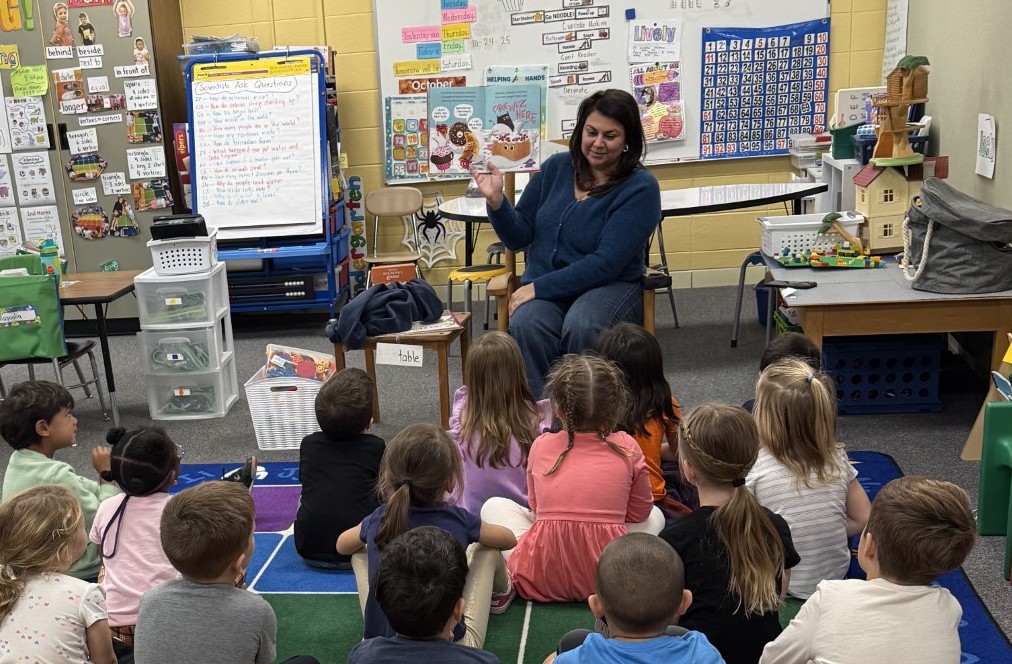How AI and The Metaverse Can Help Harness the Power of Play
Incorporating AI, the Metaverse, and free play into students' lives is a counterintuitive way to boost learning

Downtime and free play are all-too-often overlooked ingredients in student success and new technologies such as the Metaverse and AI might soon help educators harness that potential.
Linked to the concept of downtime is the importance of play, which is also often overlooked in education, says Kathryn Hirsh-Pasek, Stanley and Debra Lefkowitz Faculty Fellow in the Department of Psychology at Temple University and a Senior Fellow at the Brookings Institution. Standardized test scores improve when play is prioritized in schools, she says, and more interventions for a student are not always better. “Learning loss shouldn't mean accelerating by getting more and more and more. It’s time to change the mindset on how we teach,” she says.
Changing this mindset means rethinking teaching practice overall, but also designing Metaverse and AI technology with the science of play and creativity in mind, Hirsh-Pasek says.
“Many of our most important kinds of construction of meaning about our world actually happens when we're not in task-oriented, goal-directed states,” says Mary Helen Immordino-Yang, professor of education as well as psychology and neuroscience at the University of Southern California. “You need to feel safe, and you need to let go of your outer vigilance and not be disrupted by things digging at you or by having to finish something in a timely way.”
The Importance of Downtime
Immordino-Yang was the lead author of the influential 2012 study “Rest is Not Idleness.” Immordino-Yang and her colleagues at USC and MIT used brain scans to look at study participants in a restful state called “default mode.” They found that important regions of the brain are active during this state and mostly suppressed when attention is focused on the outside world.
This internal reflection is vital for student growth both emotionally and intellectually, says Immordino-Yang, who has conducted extensive research on these topics.
Specifically, Immordino-Yang says downtime can help students with:
Tools and ideas to transform education. Sign up below.
- Morality and ethics/meaning-making
- Identity building/self-awareness
- Complex social emotions
- Formation of sense of purpose in life
- Mental health and awareness and mindfulness
However, Immordino-Young is not saying downtime should replace all instruction. Instead, she says good education allows students to toggle back and forth between being introduced to new concepts and ideas and having the time to process the larger implications of those ideas.
For instance, in a 10th-grade physics class, Immordino-Yang says students might be asked to roll a ball down an incline and calculate its speed and what role the size of the ball plays in that equation. Stepping away from the exercise will help them process its larger implications. “There's this bigger thing at play, which is this notion of gravity, which you can't directly observe, but which you're getting indicators of indirectly from these measurements,” she says.
The Importance of Play
Children can learn important skills through guided and free play, including emotional regulation, language development, and reading, according to Hirsh-Pasek’s research and research conducted by others. Play is hardwired in humans and many other animals.
“Monkeys play and dogs play, cats play, and guess what, even octopuses play,” Hirsh-Pasek says. “It isn't frivolous. It's actually one of the most important things that we can do, to allow ourselves to constantly grow.”
While much of the research into play focuses on its benefits for young learners, Hirsh-Pasek says it is important for students of any age, as well as adults, to play because this is one of the things that makes us more effective than rapidly advancing and improving machines.
“They can do a whole lot of tasks we can do, but we get to outsmart the robots because we think of new stuff because we explore and play and sometimes it doesn't follow an outcome,” she says.
The Metaverse and AI and Play
Immersive metaverse technologies are already being used to train medical professionals and other professionals but Hirsh-Pasek would like to see these AR and VR technologies evolve to become exploration tools not just knowledge-delivery tools.
“It's a really powerful knowledge delivery tool. Don't get me wrong,” she says. “But when it truly can become the sandbox, and we can be explorers there and learn how the Greeks lived in an age that we could never experience ourselves, or take trips to Mars, that's when I think this tool will allow us to expand beyond what we can see and really learn to think in a critical and creative way about how to solve the problems of tomorrow.”
When it comes to AI, Hirsh-Pasek feels similarly. “It's more of a delivery-of-knowledge system than an exploration system,” she says. For example, rather than help tutor students in existing archeology facts, Hirsh-Pasek would love to see AI that could help them role-play as an archeologist.
In the meantime, play can guide student interaction with existing AI tools. “Part of what's going to make AI useful is knowing how to ask the right questions,” she says. “Part of what's going to allow us to ask the right questions is playing around with it, and being good enough critical thinkers to know how to navigate information ourselves.”
Using Downtime and Play in Your Classroom
Harnessing the benefits of downtime and play often involves implementing educational strategies that prioritize pedagogical strategies such as student-centered learning, active learning, and project-based learning.
“One of the problems we have is that we think of play as just one thing, we think of it as free play. I happen to love free play but free play is only one kind of play,” says Hirsh-Pasek. “There's also playful learning, or guided play, where the teacher becomes the guide on the side rather than the sage on the stage. And when you do that, and you allow children and adults to take some initiative in their own learning, magic happens. The teachers are happier teaching, the kids are happier learning.”
To facilitate the benefits of downtime and student choice, Immordino-Young recommends educators take time to think about each student in their class and recognize what that student does or knows better than them. “Then help facilitate the development of those skills,” she says. “If you don't know what those are, if you see kids without strengths in your classroom, you need to try harder.”
It can also be important to realize when you don’t need to be in charge. Immordino-Young lives near youth sports fields and can overhear children playing and how coaches are directing them.
“When you listen and you can't see what's going on, it really sounds like adults playing soccer with children as pawns,” she says. “What if the adults just shut up and let the kids play soccer? Would the standard of play, right here, right now go down? For sure. But what capacities would the kids be developing that they're not developing when adults are doing it for them?”
Erik Ofgang is a Tech & Learning contributor. A journalist, author and educator, his work has appeared in The New York Times, the Washington Post, the Smithsonian, The Atlantic, and Associated Press. He currently teaches at Western Connecticut State University’s MFA program. While a staff writer at Connecticut Magazine he won a Society of Professional Journalism Award for his education reporting. He is interested in how humans learn and how technology can make that more effective.

